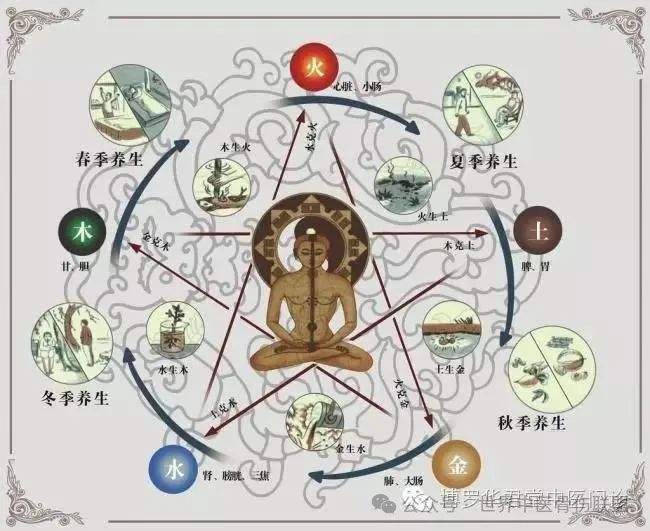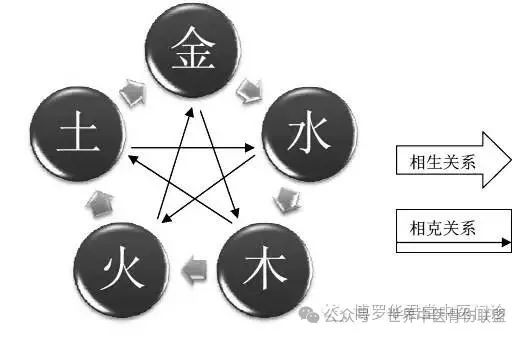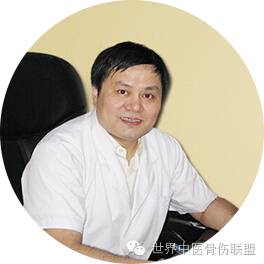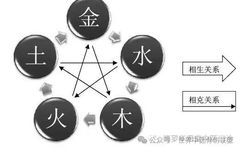
The theory of the Five Elements (Wu Xing) is a worldview and methodology developed by ancient Chinese scholars to understand and explain nature, falling under the category of naive materialism. It has profoundly influenced the development of ancient Chinese philosophy. Based on the medical practices of physicians, the Five Elements theory gradually evolved into an important discipline in TCM diagnosis. In the “Huangdi Neijing” (Yellow Emperor’s Inner Canon), the Five Elements theory is integrated with TCM principles to elucidate the interrelationships between physiological diseases, pathological manifestations, and the external environment of the human body, guiding clinical diagnosis, treatment, and care. Thus, the Five Elements theory has become a crucial component of the TCM theoretical system.1. Basic Concepts of the Five Elements(1) Concept of the Five Elements The Five Elements refer to the five basic forms of matter and their dynamic changes: Metal (Jin), Wood (Mu), Water (Shui), Fire (Huo), and Earth (Tu). Ancient philosophers believed that Metal, Wood, Water, Fire, and Earth are the fundamental elements that constitute all things in the world. The manifestations of all phenomena are the results of the movements and transformations of these five substances. The ancients categorized all things and phenomena in the universe into the realm of the Five Elements, using the interactions of generation, overcoming, multiplication, and mutual restraint among the Five Elements to explain the laws of their movement and transformation, a principle known as the “Five Elements Theory.”
| Nature | Five Elements | Human Body | |||||||||||
| Five Sounds | Five Tastes | Five Colors | Five Transformations | Five Qi | Five Directions | Five Seasons | Five Organs | Six Bowels | Five Senses | Five Bodies | Five Emotions | Five Voices | Changes |
| East | Sour | Green | Growth | Wind | Spring | Wood | Liver | Gallbladder | Eyes | Tendons | Anger | Shout | Grip |
| South | Bitter | Red | Long | Heat | Summer | Fire | Heart | Small Intestine | Tongue | Pulse | Joy | Laugh | Worry |
| Center | Sweet | Yellow | Cut | Dampness | Late Summer | Earth | Spleen | Stomach | Mouth | Flesh | Thought | Sing | Belch |
| West | Spicy | White | Harvest | Dryness | Autumn | Metal | Lung | Large Intestine | Nose | Skin and Hair | Sadness | Cry | Cough |
| North | Salty | Black | Conceal | Cold | Winter | Water | Kidney | Bladder | Ears | Bone | Fear | Moan | Grain |
(2) Characteristics of the Five Elements The characteristics of the Five Elements were abstracted by ancient people through long-term observation of the operational laws of Metal, Wood, Water, Fire, and Earth in their practical life. For instance, Metal is characterized by transformation, which extends to encompass all things and phenomena that possess properties of convergence and neatness. Similarly, Wood is characterized by growth, upward movement, and outward expansion, which later extends to include all things and phenomena that embody growth, elevation, and unblocking. Water is characterized by nourishing all things and flowing downward, which extends to include all things and phenomena that are cold, moistening, and downward in nature. Fire is characterized by warmth, rising, and upward development, which extends to include all things and phenomena that are warm and ascending. Earth is characterized by nurturing all things, which extends to include all things and phenomena that embody growth and support.(3) Classification of Things and Phenomena by the Five Elements Ancient Chinese scholars used the laws of movement and development of the Five Elements to categorize all things and phenomena in nature, as well as physiological and pathological phenomena of the human body, forming five major systems. In nature, regarding the growth of all things, there are five transformative characteristics: birth, growth, transformation, harvest, and storage; in terms of direction, there are five directional characteristics: East, South, Center, West, and North. In the human body, regarding the five organs, there are the five characteristics of the Liver, Heart, Spleen, Lung, and Kidney; in terms of emotions, there are five characteristics: Anger, Joy, Thought, Sadness, and Fear.2.Basic Content of the Five Elements Theory 1. Mutual Generation of the Five Elements Generation refers to the act of promoting and assisting. Mutual generation indicates that there exists a promoting effect of one element on another among Metal, Wood, Water, Fire, and Earth. The law of mutual generation among the Five Elements is: Wood generates Fire, Fire generates Earth, Earth generates Metal, Metal generates Water, and Water generates Wood. The element that generates another is considered the “mother,” while the element that is generated is considered the “child.” For example, Water is the mother of Wood, and Wood is the child of Water.2. Mutual Restraint of the Five Elements Restraint refers to the act of controlling and limiting. Mutual restraint indicates that there exists a restraining effect of one element on another among Metal, Wood, Water, Fire, and Earth. The law of mutual restraint among the Five Elements is: Wood restrains Earth, Earth restrains Water, Water restrains Fire, Fire restrains Metal, and Metal restrains Wood. Each element in the Five Elements possesses both “I restrain others” and “others restrain me” relationships. “I restrain others” means I prevail, while “others restrain me” means I do not prevail. Therefore, the mutual restraint relationship among the Five Elements is also referred to as the relationship of “prevailing” and “not prevailing.”
1. Mutual Generation of the Five Elements Generation refers to the act of promoting and assisting. Mutual generation indicates that there exists a promoting effect of one element on another among Metal, Wood, Water, Fire, and Earth. The law of mutual generation among the Five Elements is: Wood generates Fire, Fire generates Earth, Earth generates Metal, Metal generates Water, and Water generates Wood. The element that generates another is considered the “mother,” while the element that is generated is considered the “child.” For example, Water is the mother of Wood, and Wood is the child of Water.2. Mutual Restraint of the Five Elements Restraint refers to the act of controlling and limiting. Mutual restraint indicates that there exists a restraining effect of one element on another among Metal, Wood, Water, Fire, and Earth. The law of mutual restraint among the Five Elements is: Wood restrains Earth, Earth restrains Water, Water restrains Fire, Fire restrains Metal, and Metal restrains Wood. Each element in the Five Elements possesses both “I restrain others” and “others restrain me” relationships. “I restrain others” means I prevail, while “others restrain me” means I do not prevail. Therefore, the mutual restraint relationship among the Five Elements is also referred to as the relationship of “prevailing” and “not prevailing.”
Mutual generation and restraint maintain the dynamic balance among the Five Elements, which is a normal phenomenon in nature. The mutual generation and restraint of the Five Elements within the human body also belong to normal physiological activities.3. Application of the Five Elements Theory in TCM(1) Explaining the physiological functions of the five organs and their interrelationships1. Explaining the physiological functions of the five organs The Five Elements theory categorizes the five organs of the human body (Liver, Heart, Spleen, Lung, Kidney) according to the Five Elements, summarizing their physiological functions based on the attributes of the Five Elements. The well-known phrases state that the Lung belongs to Metal; the Liver belongs to Wood; the Kidney belongs to Water; the Heart belongs to Fire; and the Spleen belongs to Earth, which correspond to the different operations of the five organs.2. Explaining the interrelationships among the five organs(1) The mutual nurturing relationship among the five organs The Liver (Wood) stores blood to assist the Heart; the heat of the Heart (Fire) warms the Spleen; the Spleen (Earth) transforms food and fluids to nourish the Lung; the Lung (Metal) clears and descends to assist the Kidney; the essence of the Kidney (Water) nourishes the Liver.(2) The mutual restraint relationship among the five organs The Lung (Metal) clears and descends, which can restrain the upward movement of the Liver (Wood) to prevent excess; the upward movement of the Liver (Wood) can restrain the stagnation of the Spleen (Earth); the transformation of the Spleen (Earth) can prevent the flooding of the Kidney (Water) and the excess of Heart (Fire); the warmth of the Heart (Fire) can restrain the excessive clearing of the Lung (Metal).(2) Explaining the interrelations of organ pathologies The Five Elements theory can be used to explain the interrelations of organ pathologies. For example, “Wood injures Metal” indicates that the Lung (Metal) not only fails to restrain the excessive upward movement of the Liver (Wood) but is also harmed by the Liver’s heat, leading to symptoms such as coughing. The concept of “Wood overcomes Earth” indicates that Liver disease can affect the Spleen, which can be explained by the mutual generation, restraint, multiplication, and mutual injury of the Five Elements, indicating that they are interrelated pathologically.(3) Diagnosis, treatment, and care of diseases The extensive application of the Five Elements theory in medical diagnosis primarily involves classifying and relating changes in the five organs, colors, and pulse patterns, combined with the four diagnostic methods of observation, listening, inquiry, and palpation in TCM. Based on the theory of the Five Elements, one can infer the condition or make a diagnosis. For instance, a common observation of a red face and a bitter taste in the mouth often indicates excessive Heart (Fire). During the progression of a disease, an ailment in one organ typically affects other organs. Therefore, in addition to treating the patient’s condition, it is essential to adjust the relationships among the organs according to the operational laws of the Five Elements to prevent the deterioration of the disease.Conclusion: The Five Elements theory is not a fallacy; it is part of traditional Chinese culture, a dialectical thought system that withstands the test of time, and is also the most fundamental part of the entire TCM system. The Five Elements theory represents the wisdom of ancient Chinese scholars and continues to provide solutions to many problems in today’s society.Professor Song Yongzhong

Professor Song Yongzhong, President of the World Alliance of Traditional Chinese Medicine Orthopedics, CCTV-1 Health Consultant, Health Guest of Daily Health Hall, Director of Beijing Beiyuan TCM Clinic, Deputy Secretary-General of the Youth Enterprise Committee of the Communist Youth League, Mentor of TCM Inheritance, from a family of TCM practitioners, Orthopedic Expert, Renowned Physician in Beijing.Upholding medical principles, forming a unique lineage; with Song’s TCM orthopedics and Song’s Qi and Blood regulation, becoming the core of traditional Chinese orthopedics (treating hundreds of thousands of patients, training over ten thousand orthopedic students, and accepting over 300 apprentices).


